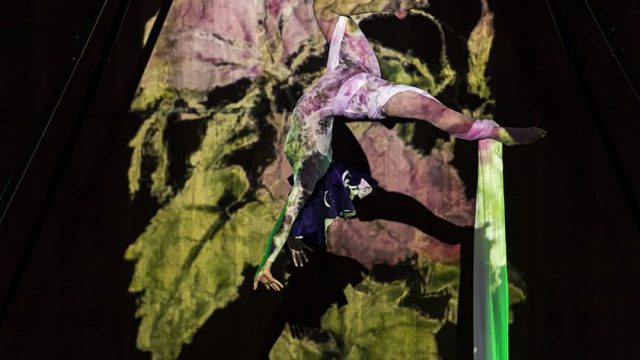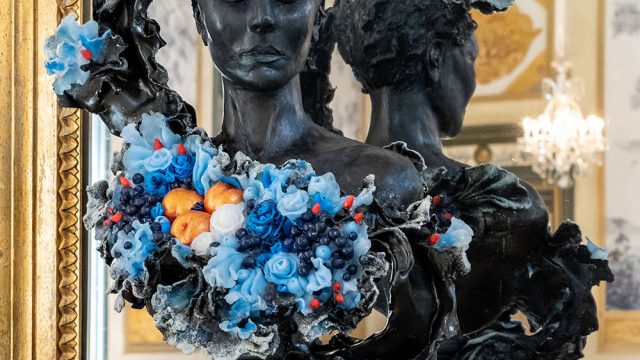Using a variety of materials, but privileging porcelain for its sense of fragile power, Aimee facilitates a conversation around the human influence on the environment, the effects of nuclear power, and the use of alternative energy sources.
Having started my residency back in October 2019, I am now over a third of the way through – coming out of full research mode, into making and facilitating.
As you would expect, plunging into a resource as vast at the V&A requires a certain amount of filtering; there are so many rabbit holes to stroll past. Staying focused on my plans is the challenge, but accepting diversions usual and, I think, expected within any artists’ practice – I expect this might happen en route more than once.
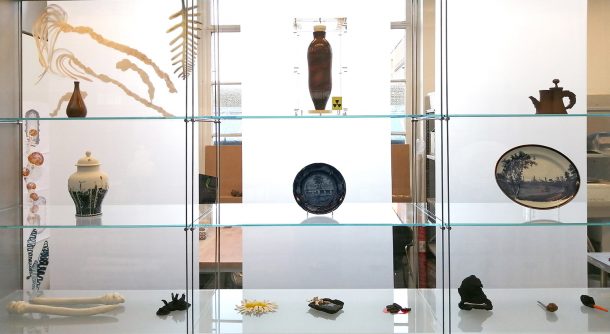
My first adventure was to explore and present my version of the atomic through the vast V&A Ceramics collection. My display featured a small earthenware vase (top left, above), made by Pilkington’s Lancastrian Pottery & Tiles of Manchester, England, 1903–4. The orange ‘Sunstone’ glaze was produced with Uranium oxide. Uranium oxide was used by potters up until the 1940s. It is highly likely that pots of this deadly oxide still exist at the back of some potters’ shelves…
There is a splendid example of the glaze on in the second display item I picked, a vase by Grete Marks (Germany about 1932), showing beautiful swirls of bright red on a brown background. The vase, not normally seen, is usually stored at Blythe House, contained for evermore in its Perspex box with nuclear trefoil. Next to this, ‘Double Cooling Towers Teapot No. 10’ (USA, 1984) made by Richard Notkin, complete with a mushroom cloud on top.
The next shelf down showed a traditional blue and white ‘Story of Energy’. From right to left, under Notkin’s teapot, I displayed a platter by Paul Scott, ‘Seascale Pigeon no. 14’ (Cumbria, 2012), that features the doomed Seascale pigeons that used to roost in the filters on top of the towers of Sellafield Nuclear Power plant. The filters were considered follies by some, but saved the local population from the UK’s worst nuclear disaster when, in 1957, a fire raged through the plant and the filters captured the radioactive dust particles. Next, a Staffordshire plate, about 1835, made by Enoch Wood & Sons. The early depiction of a steam train on this plate is taken from the original print, ‘View of the Railroad from Hetton Colliery’ (1822). I consider the start of the Anthropocene as a geological marker, one that starts where we actively mined the earth for fossil fuels (in this case coal, now, in addition to oil, we mine Lithium extensively to produce batteries). Finally, a lidded jar from the group ‘Ornamental Inheritance’ (Netherlands, 2005) by Jo Meesters and Marije van der Park, the presence of aeroplanes and wind turbines reflect concerns around our impact on the planet.
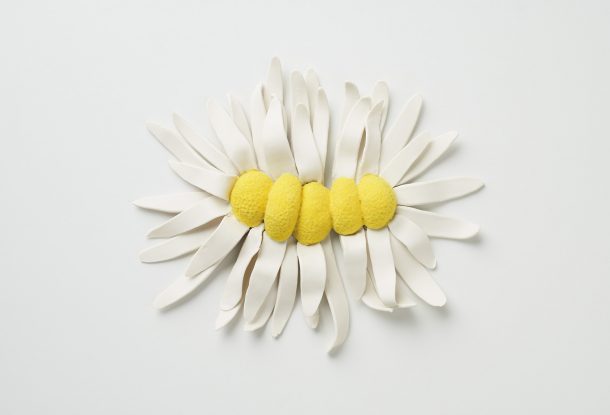
The bottom layer of the vitrine showcased my own ceramic ‘Samples of Radioactive Boglach’. These speculative mutative organisms started life during a previous residency at Cove Park in Scotland, where my nuclear enquiry begun. Part Sci-Fi, part Sci-Fact, they question what sort of organisms might result over time due to long-term low-level radiation leakage. These pieces are currently on show at Mission Gallery, Swansea, until 21 March. (Above Mutated Daisy, Aimee Lax).
I have invited a special display into the vitrine now, until April. Friday 31 January saw the opening of ‘Laboratory for Variable Risk Perception’, an artwork by Ele Carpenter:
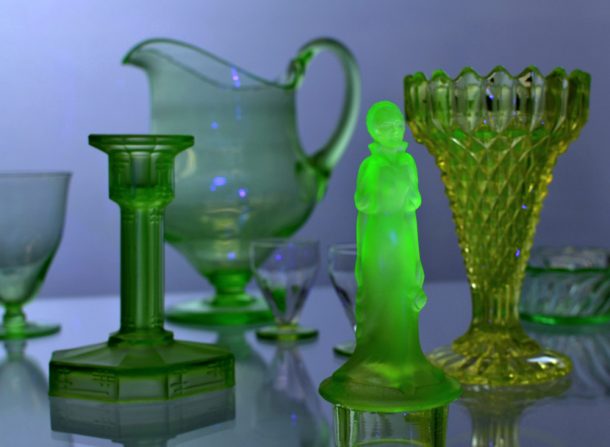
This ordinary/extraordinary collection of Uranium glass belongs to Carpenter, acquired through charity and antique shops, car-boot sales and gifts. Carpenter is reader and Lecturer in Curating at Goldsmiths and convenor of the Nuclear Culture Research Group (NCRG). The NCRG work to connect with artists, writers, philosophers, nuclear scientists and specialists who comment through their work and research on nuclear culture and nuclear heritage.
We invited visitors to shine a UV torch on to the display, but also to discover the Uranium glass in the V&A collection. There are many pieces, until that night, that were undiscovered…
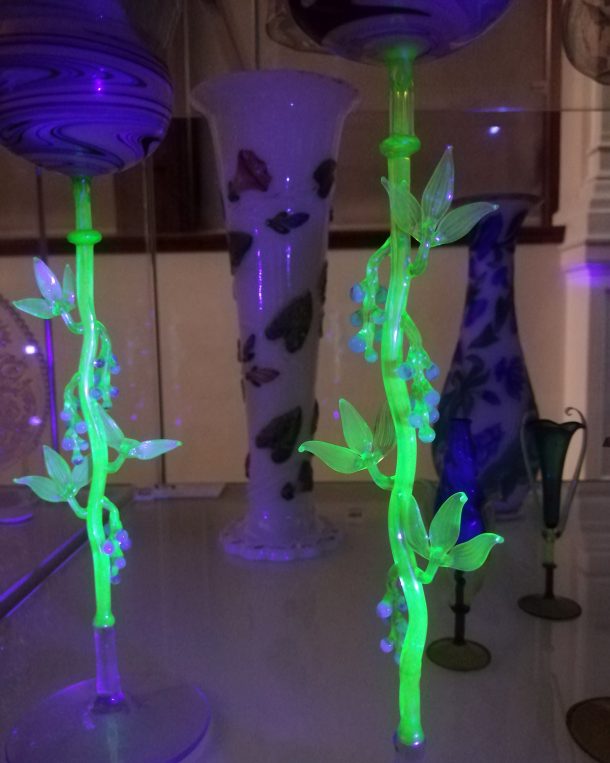
Aimee Lax continues her residency till July 2020. For more information visit our residencies webpage. You can meet Aimee at her next Open Studio in room 143a on 27 and 28 March.

